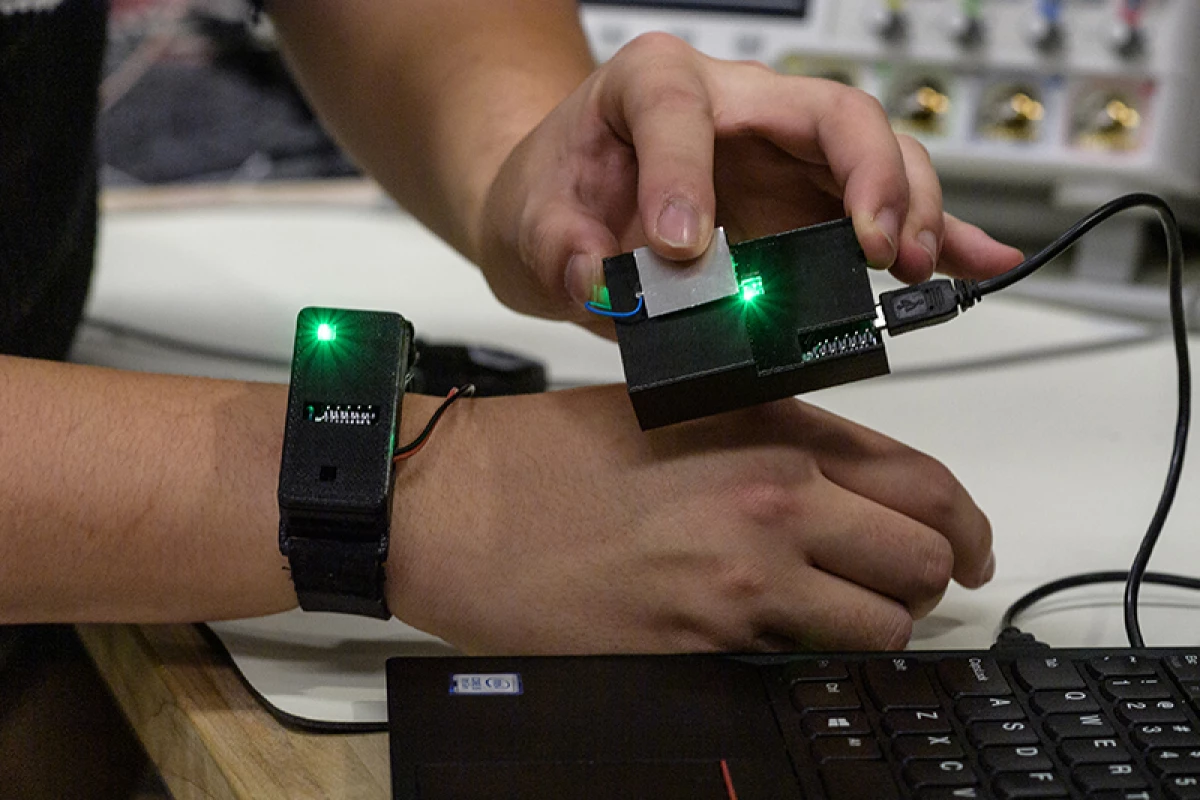Over the past few years many of us have become accustomed to unlocking phones and computers with our fingerprints, but scientists are working on touch technologies that could facilitate much more than that. A new prototype device from a team at Purdue University offers an interesting look at the possibilities in this area, with the scientists imagining it could one day be used to make payments, enter passwords and send photos through a single touch.
The technology developed by the Purdue team is similar to a number of other data transmission technologies we’ve looked at recently that are designed to offer better security than traditional Bluetooth. By using low-power electromagnetic fields to transmit data through the human body instead, these types of technologies make it harder for hackers to intercept the signal, while opening up some interesting possibilities at the same time.
We’ve looked at an example from Panasonic that transmits data from one person to another through touch, devices worn around the arms to turn the human body into a medium for data transmission and systems that authenticate door locks through touch.
The Purdue team’s prototype system is a watch-like device worn on the wrist that takes data and sends it via the human body using low-frequency electromagnetic signals. Only when the wearer’s finger comes into physical contact with a receiver does it create a connection for the data to travel across, meaning otherwise the signal remains safely confined to the body.

“We’re used to unlocking devices using our fingerprints, but this technology wouldn’t rely on biometrics – it would rely on digital signals," says Shreyas Sen, a Purdue associate professor of electrical and computer engineering. "Imagine logging into an app on someone else’s phone just by touch. Whatever you touch would become more powerful because digital information is going through it.”
The device needs further development, but its software could be programmed to convey certain pieces of data, such as credit card information to make payments, or authentication data to gain access to a building instead of using a key fob.
“You wouldn’t have to bring a device out of your pocket," Sen says. "You could leave it in your pocket or on your body and just touch.”
However, the researchers say they also need to develop a way for the data transfer to be turned off to ensure that valuable information isn't transferred to all surfaces that are equipped to receive the signals. But when such hurdles are overcome, the team sees great potential for the technology.
"Anytime you are enabling a new hardware channel, it gives you more possibilities," says Sen. "Think of big touch screens that we have today – the only information that the computer receives is the location of your touch. But the ability to transfer information through your touch would change the applications of that big touch screen.”
The research was published in the journal Transactions on Computer-Human Interaction, and you can hear from the scientists involved in the project in the video below.
Source: Purdue University




